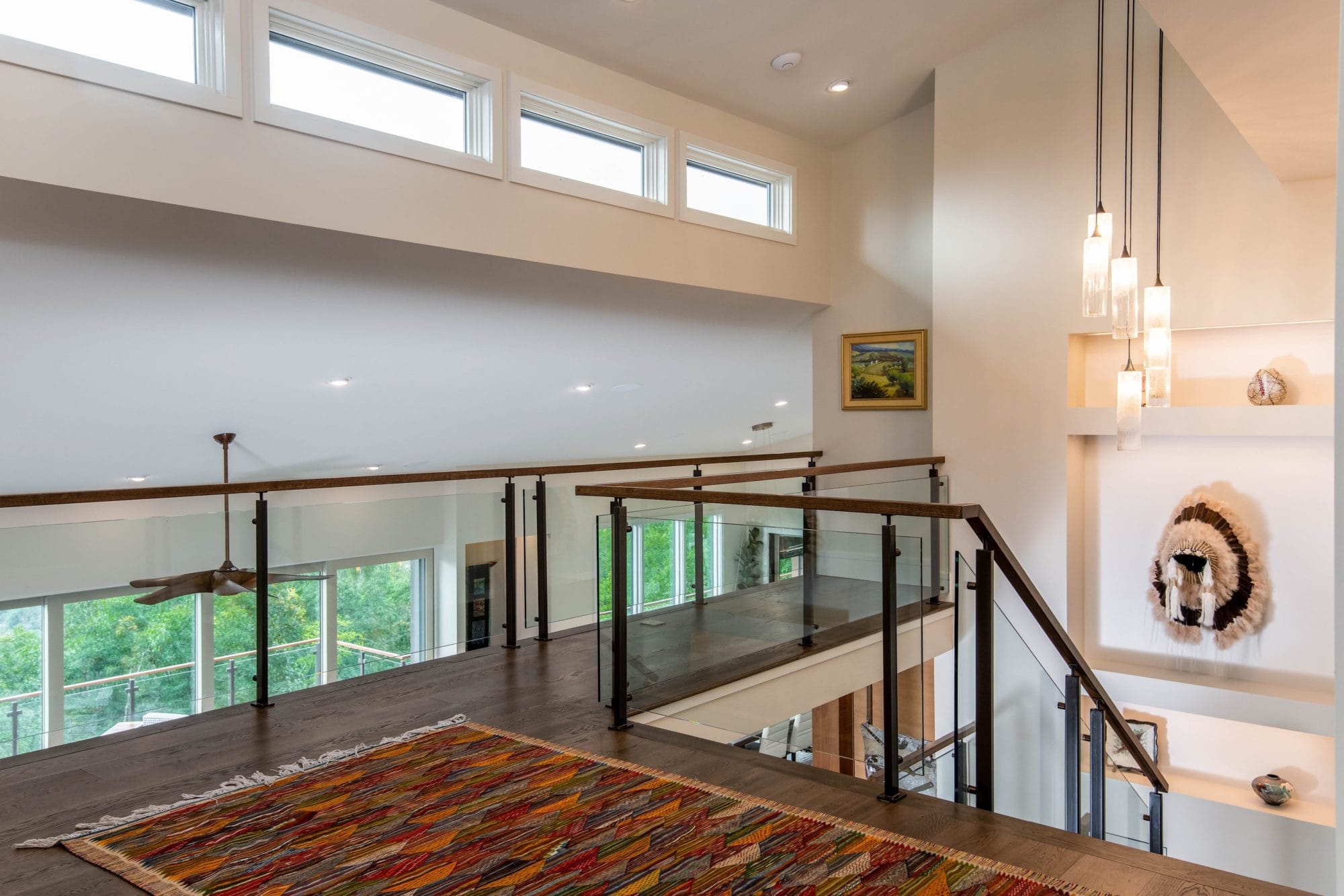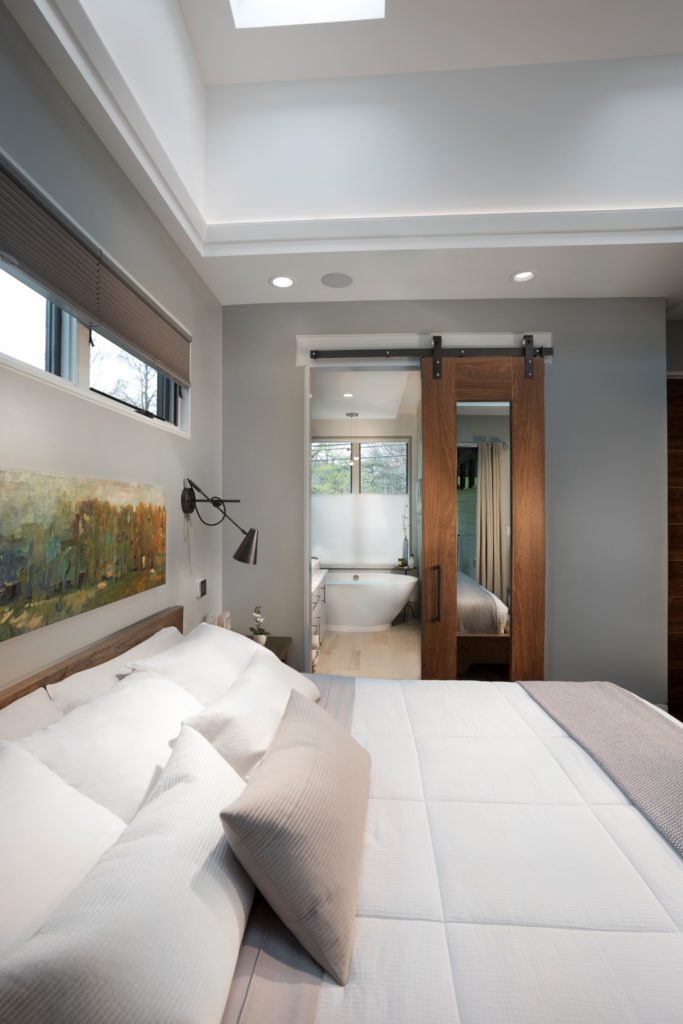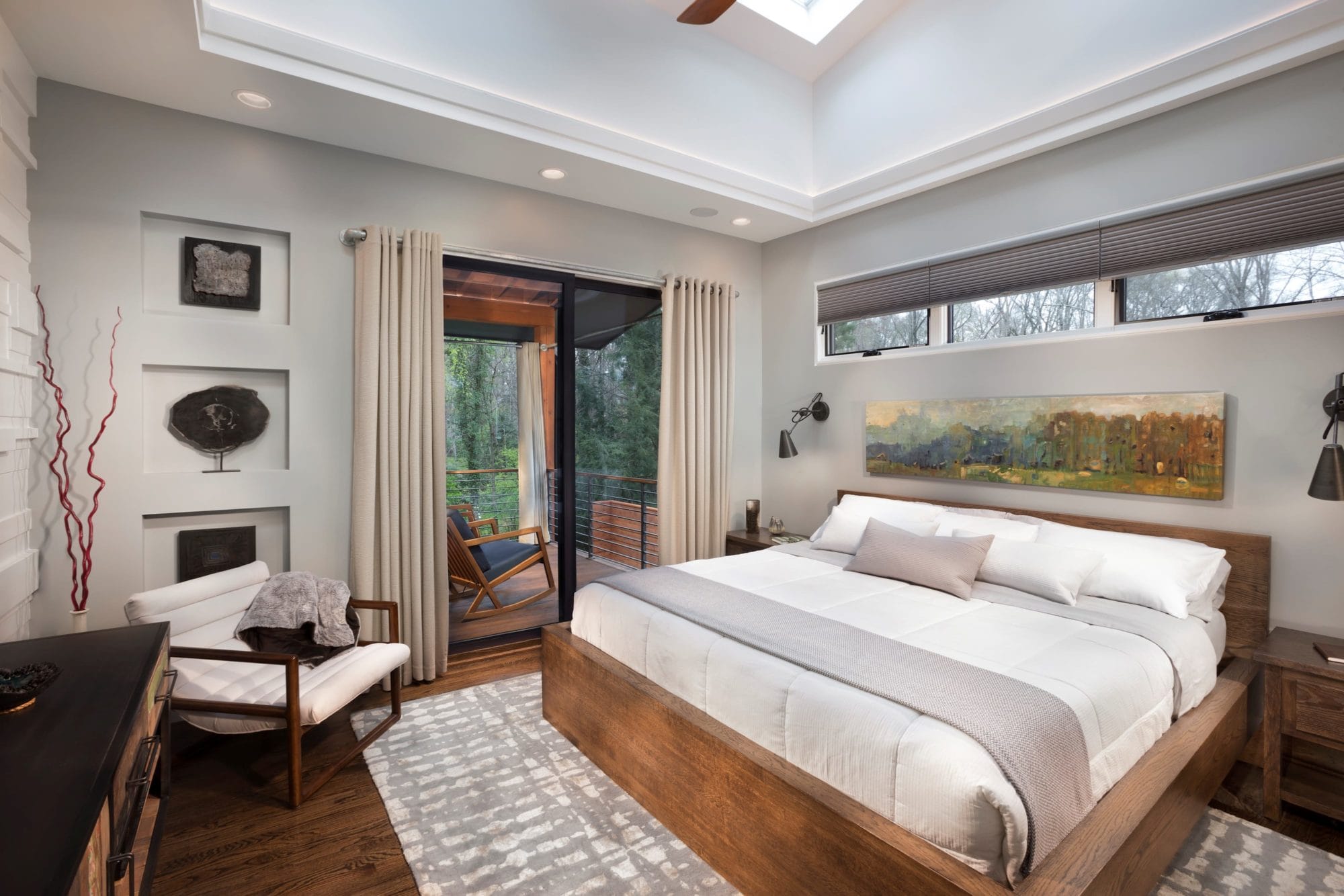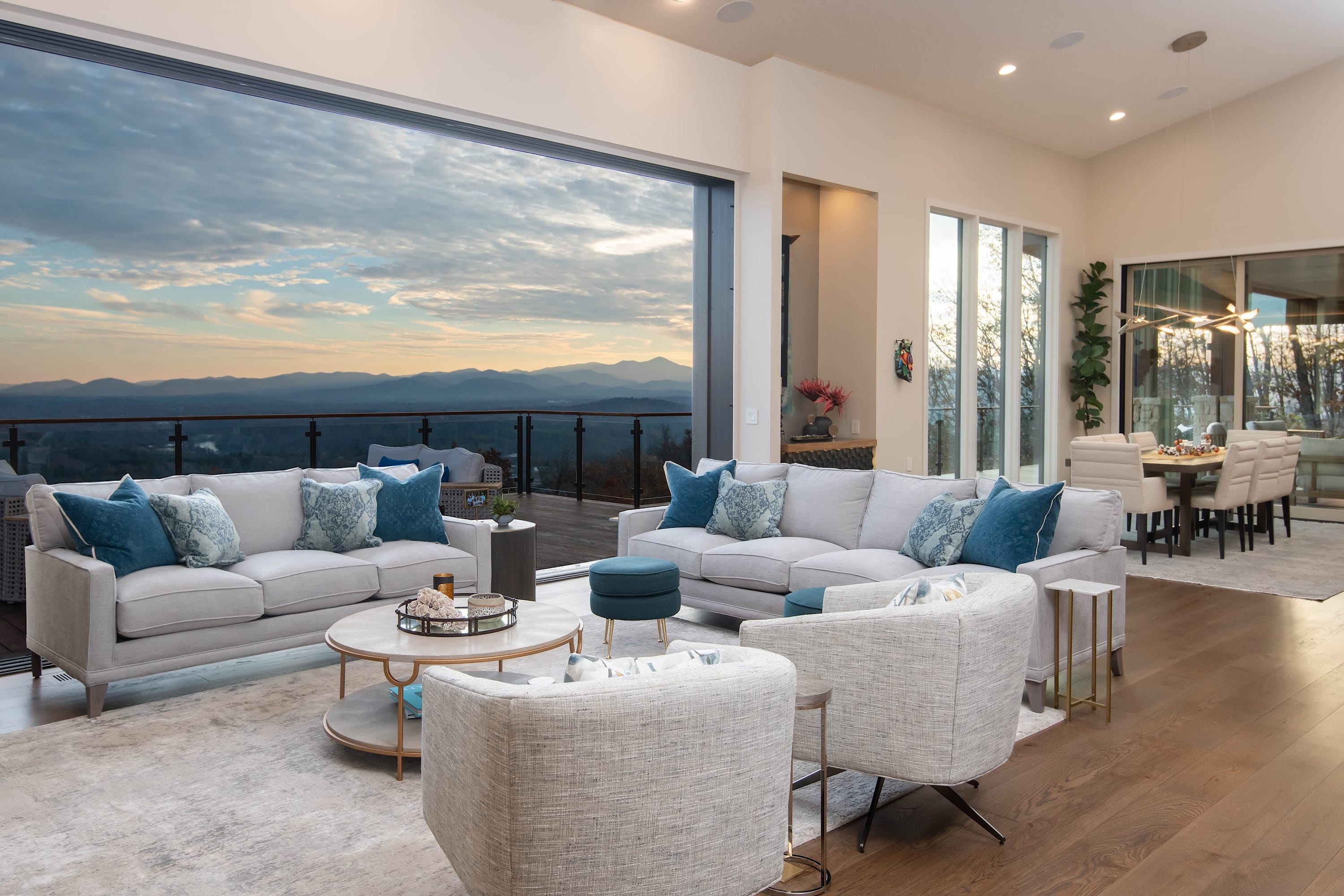“We want lots of glass across the entire back of the house!”
This is one of the most consistent things we hear when first engaging with a prospective client. As contemporary architecture and modern design sweep the country, the demand for “daylighting” has re-emerged.
Daylighting is defined as the practice of placing windows, skylights and other openings, and reflective surfaces so that sunlight can provide effective internal lighting. Particular attention is given to daylighting while designing a building when the aim is to maximize visual comfort or to reduce energy use.

Why daylight?
There are many reasons to daylight a home or office building. The most obvious is to let in more natural light; however other reasons include ventilation, passive solar design for energy efficiency, architectural drama, and to maximize the view.
Natural light will always be the most important reason to daylight because as we age, our eyesight begins to fade. The more natural light we have, the more comfortable a resident can be in the long run. The next most popular reason for daylighting is energy efficiency. Letting in more natural light reduces the demand for artificial light.
As energy certifications for new buildings become the standard, a focus on the glazing and overall architectural design is becoming more of a demand. Lastly, location-dependent, a desired view can dictate how a wall is designed and built and is the gateway to bringing the outside in.
Another reason to design for natural light is to elevate an occupant’s emotional disposition. Although only 4 to 6 percent of people may have winter depression, another 10 to 20 percent may have mild seasonal affectiveness disorder. The reduced level of sunlight in the fall and winter months may affect an individual’s serotonin, a neurotransmitter that affects mood. Natural light is the best way to fight reduced serotonin levels.
What are ways to design in daylight?
When thinking of design, there are so many fun ways to create daylighting opportunities. The first – and often easiest – way to daylight a building is to add skylights or sun tunnels. Sun tunnels are also a very effective way to introduce diffused light into the interior of a home.

The next easiest way is to simply enlarge window openings. Most window manufacturers will offer specific, or maximum sized, units, so having large windows operable may be an issue. Another complicating factor, depending on your region in the country, is the glazing efficiency.
This is also true of full-light glass doors. Although doors are more expensive than window units, they are possibly the best way to bring light into a building. Doors can range in operation by swinging, folding, pocketing, and sliding.
Large-format sliding doors can be the most cost-effective (and energy-efficient) way to daylight a home and maximize the view. When building energy-certified homes, each region of the country has specific values prescribed for the glazing, which may limit the styles and brands to choose from.

One challenge that daylighting can present is glare. For example, if your back wall is all glass, but the other sides do not bring light balance, you may end up with a bright glare during certain times of the day. A great solution to this problem is to use skylights to offset the one-sided glare and bring balance back to the natural lighting of the building.

In parts of the country where walk-out basements are used, daylighting can be accomplished by exposing up to half of the foundation to natural light through the use of windows and doors. The spaces that will occupy these areas include the bedrooms and common areas (living room, den, and game rooms), while the utility spaces, such as bathrooms, hallways, and mechanical rooms, can be against the grade.
What about screening?
During certain parts of the day, you may want to screen the daylight; you might need privacy or are trying to sleep. For that, we need to look at the various ways to filter light. Although traditional shades, drapes, and curtains can be appropriate, they are not always convenient or completely effective.
Skylight manufacturers, such as Velux, offer solar-powered versions of blackout and light-filtering shades for their skylights. Solar shades are powered by a battery, which is charged by the sun and thus does not require wiring at installation. Similar technology can be used for doors and windows to automatically “black out” the sun during desired times of the day.
The consensus
Regardless of what, or how, you choose to daylight, you will be glad you did. Well-lit, energy-efficient homes sell faster and for more money than those that are not. Furthermore, home owners report being happier, healthier, and more productive than those who do not live in green-built homes.

